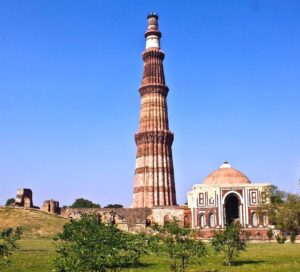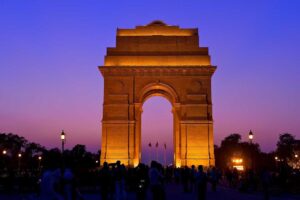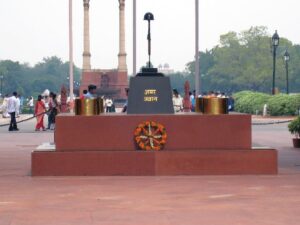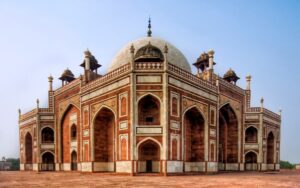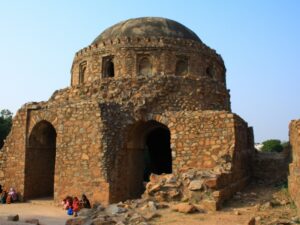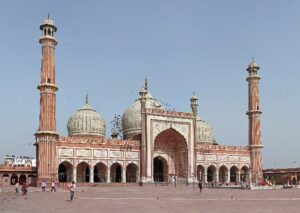Complete Guide of Red Fort
-
Location
Red Fort, Netaji Subhash Marg, Lal Qila, Chandni Chowk, New Delhi, Delhi 110006
-
Visiting Hours
7:00 AM - 5:30 PM, Except on Mondays
-
Entry Fee
Indian nationals pay INR 10, as do residents of SAARC and BIMSTEC countries. Foreigners pay INR 250. Children under the age of 15 are free.
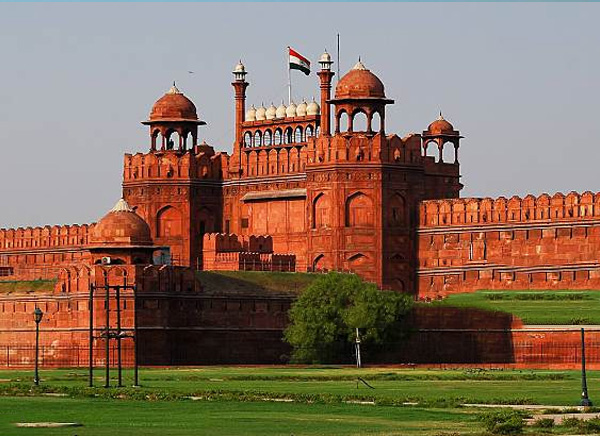

About The Red Fort(Lal Quila)
A ancient fortification in the old Delhi region is called the Red Fort. It was built by Shah Jahan in 1639 as a result of the transfer of the capital from Agra to Delhi. This massive piece of architecture, which served as the Mughal dynasty’s rulers’ primary home, got its name from its formidable red sandstone walls. It served as the ceremonial and political hub of the Mughal state, as well as housing the emperors and their households, and was the scene of significant regional events. Today, this monument is home to a number of museums that display a variety of priceless artefacts. On this Independence Day every year, the Indian Prime Minister raises the flag.
The Red Fort, formerly known as Quila-e-Mubarak or the Blessed Fort, is situated alongside the Yamuna River, whose waters supplied the moats that surrounded the fort. It was a section of Shahjahanabad, a city from the Middle Ages that is now commonly referred to as “Old Delhi.” The complete fort complex is thought to embody the Mughal era’s architectural genius and innovation. The Red Fort is one of India’s most well-known landmarks and a top tourist destination in Delhi since it has so much history and legacy attached to it. In 2007, UNESCO designated it as a world historic site. The security and restoration of this outstanding monument are currently handled by the Archaeological Survey of India.
History of Red Fort
The Red Fort, formerly known as Quila-e-Mubarak or the Blessed Fort, is situated alongside the Yamuna River, whose waters supplied the moats that surrounded the fort. It was a section of Shahjahanabad, a city from the Middle Ages that is now commonly referred to as “Old Delhi.” The complete fort complex is thought to embody the Mughal era’s architectural genius and innovation. The Red Fort is one of India’s most well-known landmarks and a top tourist destination in Delhi since it has so much history and legacy attached to it. In 2007, UNESCO designated it as a world historic site. The security and restoration of this outstanding monument are currently handled by the Archaeological Survey of India.After a bloody War of Succession between him and his three brothers, his son and successor Aurangzeb added the Pearl Mosque or the Moti Masjid to the fort complex when he became the emperor.After Aurungzeb’s dominion ended, the Fort started to deteriorate. Farrukhsiyar, a different emperor, replaced the silver ceiling with copper in 1712. Invading Delhi in 1739, the Persian Emperor Nadir Shah pillaged the Red Fort and took the priceless Peacock throne with him. Between 1739 and 1857, Ahmad Shah, Marathas, Sikhs, and the British launched numerous invasions, raids, and attacks on the Fort. In 1760, the Marathas sold the silver ceiling of the Diwan-e-Khas to earn money for the defence of forces from Ahmad Shah Durrani. After the uprising of 1857, the final Mughal emperor, Bahadur Shah II, was exiled to Rangoon, ending the 200-year reign of the Mughals in The Fort.He was the last Mughal to live in the Fort and represented the Shahjahanbad community’s participation in the 1857 uprising against the British. The Mughals came to an end as a result.
The Kohinoor diamond, the Shah Jahan Jade Wine Cup, and the Bahadur Shah II crown were all taken by the British Colonial Rulers who later captured the fort. They intended to completely destroy the Fort, including the furnishings, gardens, harem apartments, and servant quarters. The inner structure, with the exception of the white marble structures, was nearly completely demolished. Later in 1899, when Lord Curzon was appointed Viceroy of India, he oversaw the building’s rebuilding and the restoration of the gardens.
Jawahar Lal Nehru, India’s first prime minister, raised the national flag from Lahori Gate after the British left, and ever since, every Independence and Republic Day has seen the prime minister raise the flag and deliver a formal speech at the Red Fort.
Jawahar Lal Nehru, India’s first prime minister, raised the national flag from Lahori Gate after the British left, and ever since, every Independence and Republic Day has seen the prime minister raise the flag and deliver a formal speech at the Red Fort.
The Architecture
The Red Fort is a true masterpiece of architecture, combining elements of Timurid, Persian, and Indian styles. Ustad Ahmad Lahauri, who also created the Taj Mahal, was the Red Fort’s architect. It has a 2 km perimeter wall around it, which served as an effective defence. The fort’s octagonal structure contains multiple gates, the most notable of which are the Lahori, Ajmeri, Kashmiri, Mori, Turkman, and Delhi gates.
On its grounds, the Red Fort has a number of buildings. The Diwan-i-Aam, the Diwan-i-Khaas, the Moti Masjid, and the Nahr-i-Bashisht are the most well-known of all of these (stream of paradise).
The “Diwan-i-Am” is a rectangular hall with three aisles and a façade made up of nine arches, also known as the “Hall of Public Audience.” Six marble palaces were originally located along the eastern lake front. The Nahr-i-Bihisht, or “Stream of Paradise,” a waterway with an ivory fountain and a marble basin in the middle, runs through it. The Delhi Fort Museum is now housed in the Mumtaz-Mahal. The Diwan-i-Khas, also known as the “Hall of Private Audience,” is a lavishly designed room with pillars and a flat ceiling held up by engrailed arches. Before being removed by Nadir Shah, the Peacock Throne is supposed to have been held here. There are three main portions to the Hammam (or “Bath”), which are separated by passageways. The entire interior, including the floor, is made of marble and has coloured stones inlaid throughout.
To the west of the Hamman lies the Moti-Masjid (also known as the “Pearl Mosque”), which was later erected by Aurangzeb. Zafar-Mahal, a red-stone pavilion in the middle of the tank in the centre of the Hayat-Bakhsh-Bagh, was constructed by Bahadur Shah II sometime around 1842.
The majority of these structures featured elaborate floral designs and precious stone inlays. The Red Fort’s architecture is particularly notable for its distinctive cusped arches, extremely elaborate decoration, and double domes, which have come to be associated with Shahjahani style.
Get Direction to Red Fort
Near Attractions
